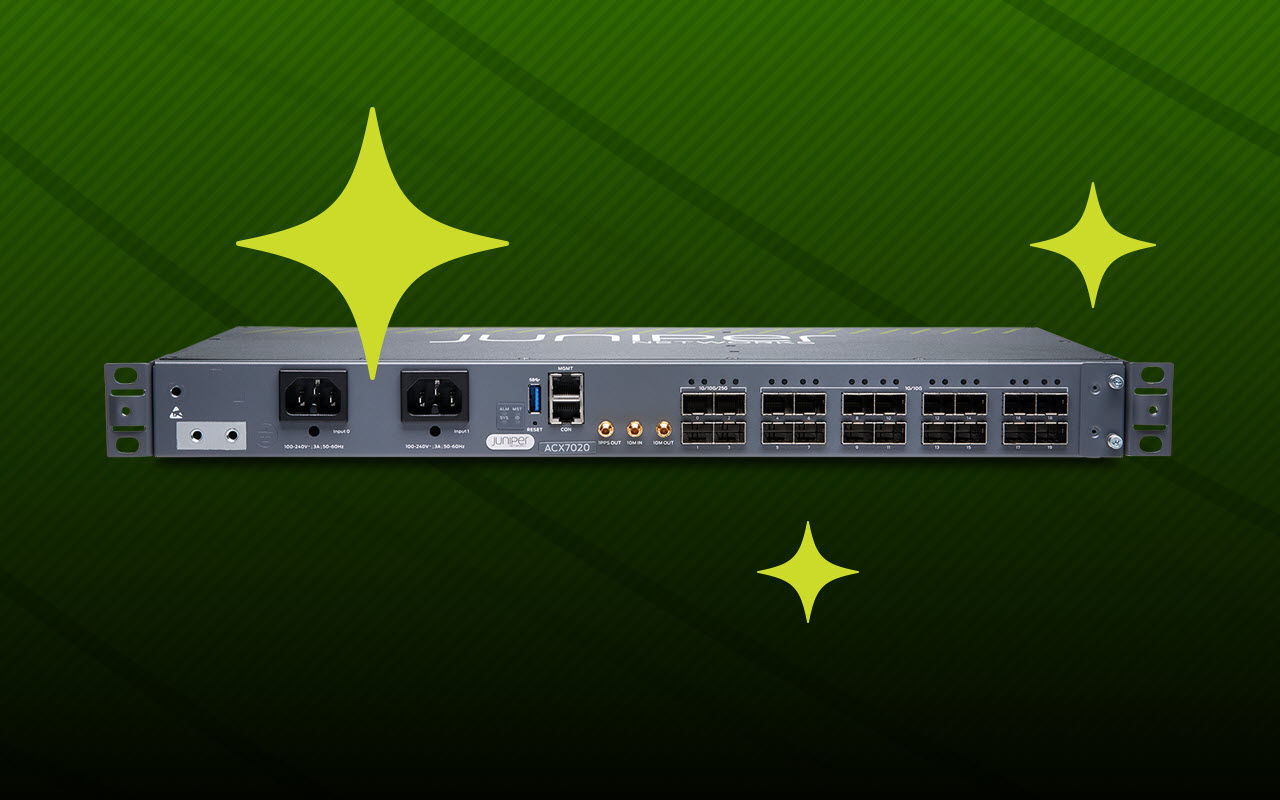Juniper Networks has been investing heavily to keep ahead of customer needs in the rapidly moving artificial intelligence (AI) market.
In January 2024, we introduced the AI-Native Networking Platform, which uses the right data with the right secure infrastructure to deliver the right real-time responses for optimal user and operator experiences. Using AI for simplified networking operations (“AI for networking”) and AI-optimized Ethernet fabrics for superior AI workload and GPU performance (“networking for AI”), Juniper is helping customers and partners deploy and operate high-performing AI training and inference networks. More recently, in July, we unveiled our Ops4AI solution that delivers further value to customers building their own AI data center infrastructure.
It’s all about the applications
Modern applications are composed of collections of loosely coupled microservices where each service can be developed, deployed, and scaled independently. Data centers exist, ultimately, to maintain and deliver these applications to meet the demands of end users.
Imagine a customer resource management (CRM) application goes down minutes before your chief revenue officer (CRO) is heading into a critical customer meeting. The DevOps team tells the CRO that the application looks good from their end so it must be the network at fault. As the head of network operations, you get a heated phone call from the CRO. And to add to the stress, you happen to be on vacation. You spend the next several hours with your team frantically troubleshooting the problem, missing time with your kids at the beach that you’ll never get back.
But imagine another scenario. You get an automated alert that a switch port performance is degraded. Another optics gray failure. The alert further indicates your company’s CRM application relies on a Kafka service that runs through that port. In seconds you re-route the traffic to another port. The CRM app was slow for less than five minutes. No one in your company even noticed and you can enjoy your vacation.
Juniper’s AI data center capabilities now put data center network operators firmly into this second scenario for business-critical applications.
Intent-Based Networking + AIOps for application assurance in the data center
Today, we’re announcing Juniper Apstra Cloud Services, a new suite of cloud-based, AI-Native applications for the data center, and the latest release of Juniper Apstra, version 5.0. Our relentless focus on data centers, whether they are traditional (CPU-based) or AI-focused (GPU-based), has always been about simplifying the network lifecycle, from Day 0 Design, to Day 1 Deployment, through Day 2+ Ongoing Operations. To accomplish this, we use Juniper Apstra multivendor intent-based networking (IBN) which delivers deterministic control, predictability, and domain context. Earlier this year we began to add AIOps to complement IBN through integrations with the Juniper microservices cloud and Marvis™ Virtual Network Assistant (VNA) for Data Center. AI is probabilistic, bringing proactive actions and natural language interfaces, which are particularly useful to customers as they deploy data center infrastructure and operate it in the unpredictable wild. Marvis and Juniper Apstra work together, giving customers the best of both worlds.

The new Data Center Cloud Services represent yet another step in our journey from data center network assurance to application assurance. This journey began in January when we released Apstra Flow, making it the only multivendor fabric management tool with built-in application and service flow monitoring. The first DC Cloud Service we introduced was Marvis Virtual Network Assistant (VNA) for Data Center, released to customers in April 2024. Today, we are announcing two new additions—App/Service Awareness and Impact Analysis.
With a foundation of AI/ML algorithms around anomaly detection, prediction, and remediation, App/Service Awareness and Impact Analysis help data center operators by reducing alert fatigue, mean-time-to-repair (MTTR), and mean-time-to-innocence (MTTI), where DevOps teams may incorrectly blame the network for application issues. Marvis for Data Center is included in all Juniper Apstra licensing tiers, while App/Service Awareness and Impact Analysis are included in the Premium tier.
App/Service Awareness
App/Service Awareness helps data center network operators assure application performance and availability for end users. It gives operators an understanding of application and service-to-resource mapping; that is, which network physical and virtual resources (ports, links, virtual routing functions, etc.) support which application flows. App/Service Awareness allows customers to see where their apps connect to the network and how they use network resources. It illuminates how network infrastructure supports specific application traffic. It’s like seeing which roads cars are taking to reach different neighborhoods.
Impact Analysis
Impact Analysis builds upon App/Service Awareness to reduce the cognitive load on operators managing network anomalies, which is particularly valuable during high-stress events with many alerts and large impacts on applications. It turns big data into big knowledge.
Impact Analysis solves the alert fatigue problem by pinpointing exactly which application is suffering from a particular network issue. Is it a bottleneck in the network? A storage issue? Something else going on in the fabric? Impact analysis uncovers the answers and the mapping is bi-directional:
- It tells the user which applications are affected given a specific anomaly in the fabric.
- Given an application issue, it identifies which anomalies in the fabric are contributing to it.
If a port goes down, for example, customers can now understand the blast radius of the event outage and know which services and apps might have problems. The result is resolving outages faster and developing more robust responses, or even preventing application outages from occurring in the first place.
But wait, there’s more
Juniper’s ongoing commitment to Apstra extends our leadership in data center network experience and further enables AIOps.
Juniper Apstra 5.0 includes over 100 new features and capabilities focused on simplifying the operational experience, including: enhanced EVPN analytics to make complex EVPN operations simple; intent-based Analytics (IBA) easy buttons, and visual guides to turn raw data into actionable insights faster than ever; simplified switch port validations to reduce vendor-specific conflicts; and user experience improvements and context-specific in-product help to simplify the learning curve and streamline workflows.
Juniper Apstra 5.0 also expands telemetry collection in important ways that will enable future AIOps applications. And broader coverage of metrics related to switch health, optics performance, power supplies, fans, and temperature provide a more comprehensive data baseline that can enable future AI-Native predictive and proactive maintenance, so operators can replace components before they fail and impact application availability.
A uniquely powerful foundation for DC AIOps

The Juniper AI-Native Networking Platform is built on the right data. Better data means better AI. But better structured data means even better and more efficient AI models. Juniper Apstra 5.0 expands the current, rock-solid data foundation for new AIOps applications for the data center.
Apstra is built on a graph database, which gives Juniper a distinct advantage in developing new AIOps for the data center. Graph databases have a “relationship-first” approach to storing and querying data and are ideal for navigating connected data. Graphs facilitate dependency analysis and determining indirect, non-obvious relationships—the impact of shutting off a link, bringing down a node, making a policy change, etc. Event correlation and root cause analysis are dramatically improved—feeding graph data into machine learning algorithms generates sharper decisions and better outcomes compared to feeding in less structured data sets.
Simplified operations | Open flexibility | Validated solution performance
New cloud-based AIOps capabilities and the new IBN investments help to deliver the most flexible-to-design and easiest-to-manage data center networks for our partners and customers. Juniper Apstra data center assurance customers grew by over 40% in the last year and we’re just getting started. Learn more here.

























